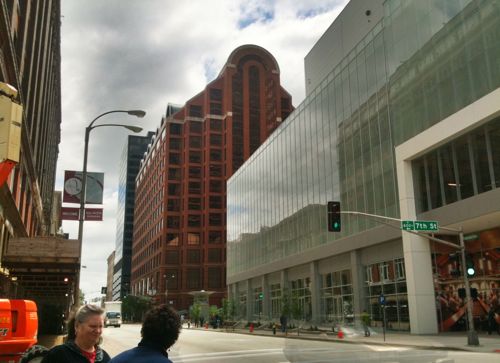PR: HUD AWARDS $153 MILLION TO REVITALIZE SEVERELY DISTRESSED PUBLIC HOUSING IN EIGHT COMMUNITIES
|
|
The following is a press release:
—-
WASHINGTON – U.S. Housing and Urban Development Secretary Shaun Donovan today awarded $152.7 million to help eight cities across the country transform severely distressed public housing developments into mixed-income communities.
Housing authorities in the following cities developed highly successful revitalization plans to transform the physical condition of a public housing community and make a positive impact on the lives of their residents: Boston, Massachusetts; Denver, Colorado; Louisville, Kentucky; Patterson, New Jersey; St. Louis, Missouri; Taunton, Massachusetts; Phoenix, Arizona; and Portland, Oregon.
“No one can dispute the exceptional track record of HOPE VI to improve housing conditions for hundreds of communities and most importantly, thousands of families,†said Donovan. “As we move toward the next generation of neighborhood revitalization – one that links housing, education, transportation, healthcare, and other support services – we will always remember it all began with HOPE VI.â€
The following housing authorities are being awarded grants through HUD’s HOPE VI Revitalization Program:
- Boston Housing Authority will receive $22 million to revitalize the Old Colony public housing development;
- Housing Authority of the City and County of Denver will receive $22 million to revitalize the South Lincoln public housing development;
- Louisville Metropolitan Housing Authority will receive $22 million to revitalize the Sheppard Square public housing development;
- Housing Authority of the City of Patterson (NJ) will receive $18.4 million to revitalize the Alexander Hamilton public housing development;
- St. Louis Housing Authority will receive $7,829,750 to revitalize the Arthur Blumeyer public housing development;
- Taunton Housing Authority will receive $22 million to revitalize the Fairfax Gardens public housing development;
- City of Phoenix Housing Authority will receive $20 million from FY 2011 funds to revitalize the Frank Luke Addition public housing development; and
- Housing Forward (Portland Housing Authority) will receive $18.5 million from FY 2011 funds to revitalize the Hillsdale Terrace public housing development.
The eight housing authorities announced today were selected among 36 public housing authorities that applied forFY 2010 HOPE VI Revitalization funding.  Six of the grantees will be funded from FY 2010 HOPE VI appropriations; two awards will come from FY 2011 funding. Later this year, HUD will conduct a competition to award $65 million in FY2011 funding to implement the Department’s new Choice Neighborhoods Program.HUD awarded high marks to applicants who plan to extend neighborhood transformation efforts beyond public housing linking housing interventions with early childhood education programs. The Obama Administration is challenging communities to build upon the HOPE VI lessons to employ a comprehensive approach to community transformation. Choice Neighborhoods aims to transform neighborhoods of poverty into viable mixed-income neighborhoods with access to economic opportunities by revitalizing severely distressed public and assisted housing and then linking these neighborhoods to well-functioning services, effective schools, public transportation and jobs.
Housing authorities are competitively selected for HOPE VI grants based on many factors including the effectiveness and project readiness of their revitalization plans. HUD gives recipients the flexibility to develop revitalization plans that meet their local needs. Among other criteria, grantees are selected based on the capacity of their  housing authority and its development team to administer and manage completion of the revitalization effort; the severity of physical distress of the development; the ability of the housing authority to supplement the HOPE VI grant with funding from other sources, private, state or local government; the ability to provide supportive services to displaced residents; and the proposed green development and energy efficiency strategies.
Since 1993, HUD has awarded 260 HOPE VI Revitalization grants to 133 housing authorities– totaling nearly $ 6.3 billion. HUD began awarding HOPE VI grants following a 1992 report by the National Commission on Severely Distressed Public Housing that found approximately 86,000 public housing units in the U.S. needed revitalization. HOPE VI Revitalization grants are used for an array of activities, including: demolition of severely distressed public housing; acquisition of sites for off-site construction; capital costs of major rehabilitation; new construction and other physical improvements; costs for mobility counseling and relocation; and community and supportive service programs for residents, including those relocated as a result of revitalization efforts.
Read a summary of the HOPE VI grants awarded today. #





